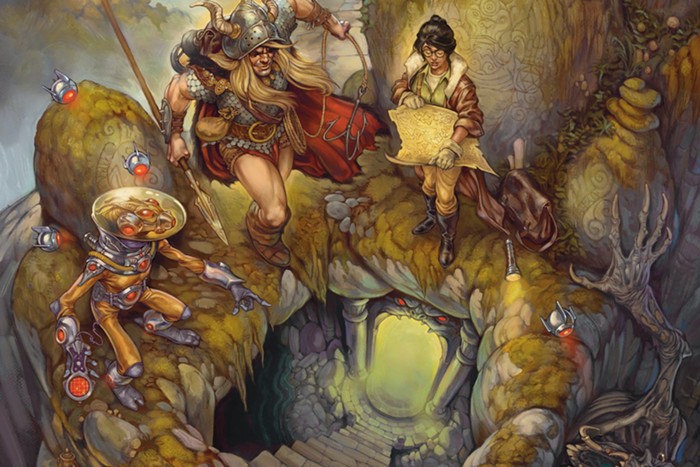by Michael Eric Dyson
(Basic Books) $24
In the song "Holler If Ya Hear Me," rapper Tupac Shakur is referring to himself. But for his book, minister and professor Michael Eric Dyson appropriates the phrase, and listens to other voices: Tupac's mother's and Dyson's own. In the beginning of his book, Dyson goes to great lengths to reveal the both strong and tragic Afeni Shakur, to give her a voice and fill in the outline that Tupac draws in his numerous references to his early life (including the song "Dear Mama," which famously identified his mother as both a "crack fiend" and a "black queen"). Dyson also devotes much attention to Afeni's involvement with the Black Panthers, and how Tupac's initial education was in the dogma of black power in early-'70s New York.
Here the book abandons the biography project altogether to indulge in a series of critical essays. Dyson begins with how Tupac inherited the struggle of the Black Panthers and developed it into the archetype of the thug. He then goes on to analyze the figure of the black male in American culture, rap's use of the word "nigga," rap's representations of women, and many other topics relating not just to Tupac's career and rhymes, but the rap industry in general.
Dyson's commentary during this section, though sound and interesting, is not very original, and the biggest pitfall is that he doesn't draw on the wealth of analysis that Tupac himself detailed in his songs. Dyson speculates what the archetype of the "thug" means to black youth and how it relates to the treatment of women--and even Tupac's own sexual-assault charges. But he doesn't look to songs that Tupac wrote, like "Definition of a Thug," in which he rhymes: "I play the cards I was given, thank god I'm still livin'/Pack my nine till it's time to go to prison/...getting pages from my bitch, it's time to dick her/I ain't in love with her, I just wanna be the one to dick her/Drop off and let the next nigga get her/...my definition of a thug nigga." Dyson wisely treats Tupac's work as a potent blend of fact and fiction, reality and emotion, but his scholarship neglects to look dead-on into Tupac's artistry for explanations or even examples.
What Dyson doesn't seem to realize is that Tupac not only wrote his autobiography in his rhymes, he also wrote critical essays. Dyson writes about Tupac's searing social criticism, but doesn't give any examples, like "my crew, we could be mistaken for Jews/we're all about the past, blast if you break the rules" (from "High Speed"). At one point Dyson calls Tupac "the hip-hop James Baldwin: an excruciatingly conscientious scribe whose narratives flamed with moral outrage," but never gives us hard evidence to validate this intriguing analogy. He makes sure to list all the books Tupac evidently had read, writing that the rapper had a "profound literacy," but does not look into his work to find how this profound literacy is expressed or articulated.
The two chapters about Tupac's death and body, however, are wonderful and exciting. Not surprisingly, they are the only chapters in which Dyson examines song lyrics to illustrate his points. He shows how Tupac was obsessed with death and the idea of God in a chaotic thug world. The world Tupac rhymed about was like the one found in the Old Testament: entrenched in sex, violence, and confused moralism. Dyson also catalogs the number of different types of people that die in Tupac's songs: rich and poor, thugged-out and innocent, and most importantly, Tupac himself frequently dies (or is killed). And because Tupac's handsome face and muscular figure was so photogenic, and because he decorated his body with conflicted messages ("outlaw," his own name, an Egyptian queen, "50 niggaz," and of course, the huge "Thug Life"), his body as object is indelibly impressed on the American imagination.
Ultimately, his body was the thing sacrificed in his martyrdom. This is why Dyson suggests that Tupac was close to being the "Black Jesus" he rapped about on the album Still I Rise. But, then again, all handsome pop stars slain before the age of 33 must assume the form of our savior, Jesus Christ.


















